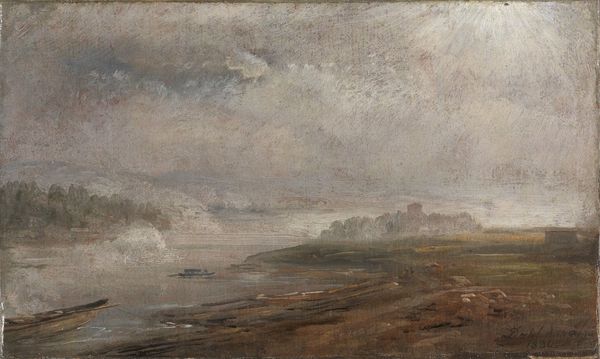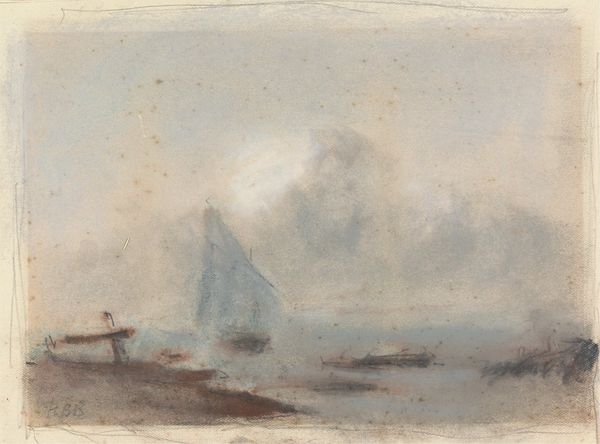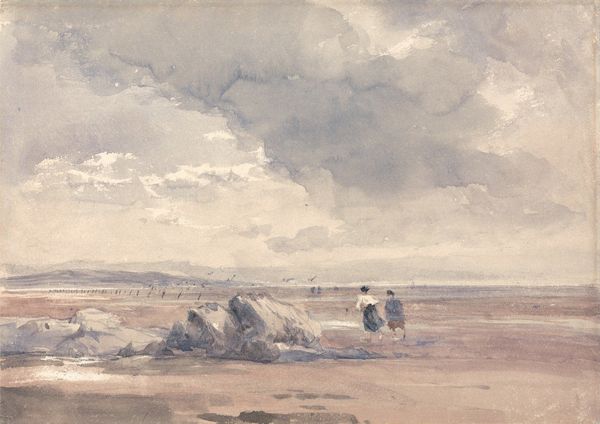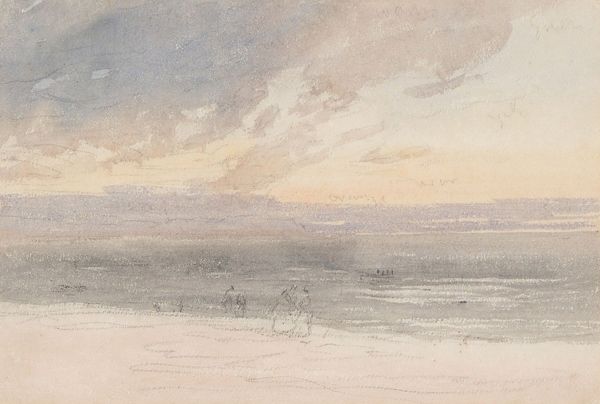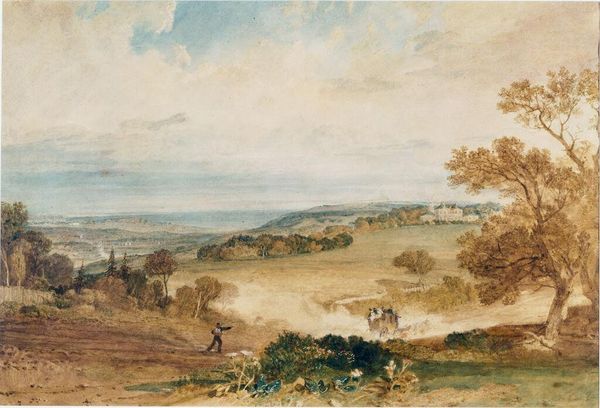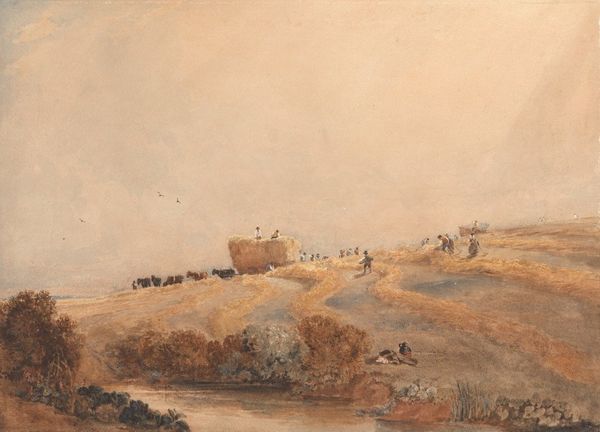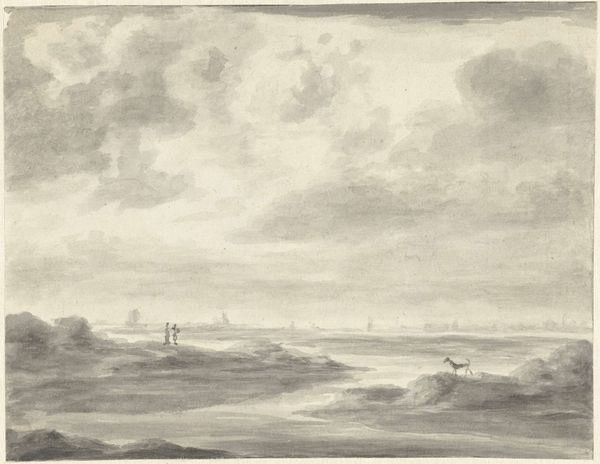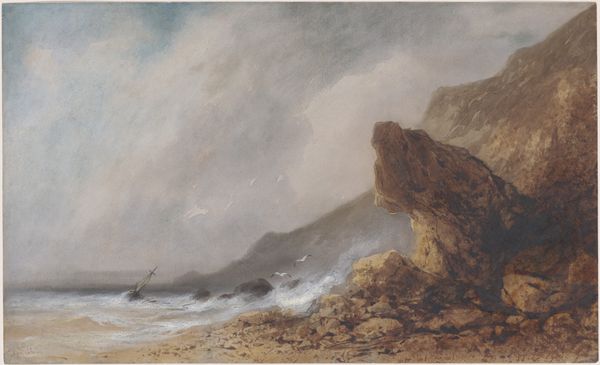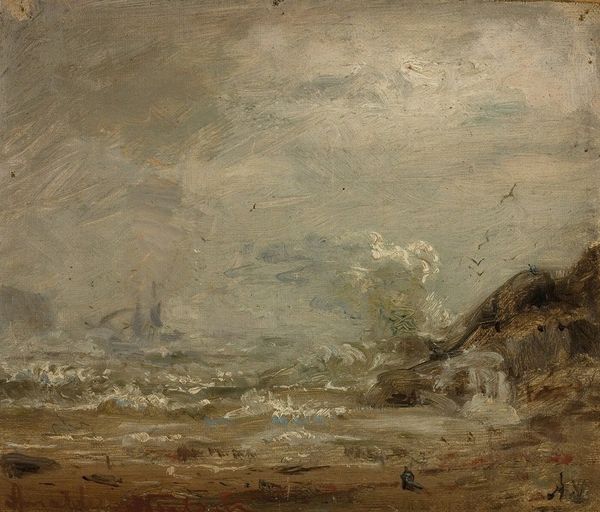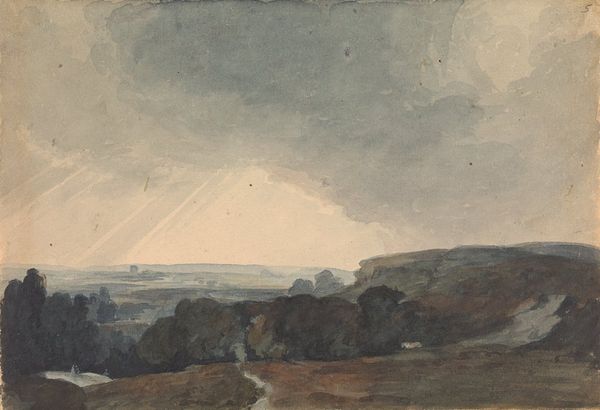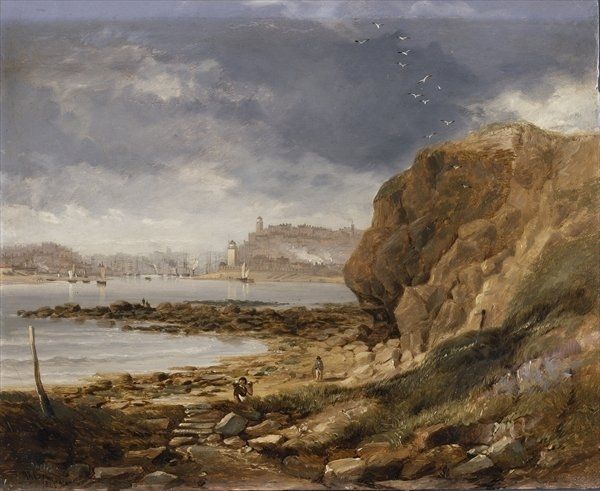
Copyright: Public Domain: Artvee
Curator: Thomas Moran's watercolor "Alpine Landscape," created in 1867, presents a study in muted tones and atmospheric perspective. What strikes you first about this work? Editor: There's a wistful, almost dreamlike quality to it. The palette feels very restrained. It's soft, even blurry, like a half-remembered vision. Curator: The watercolor technique contributes significantly to that effect. Observe how Moran employs washes to suggest depth and distance, creating an airy lightness across the composition. Editor: Right, like the mountains fade almost into the sky. There's a delicate dance between detail and suggestion. My eye is really drawn to those tiny figures in the distance – almost swallowed up by the grandeur of it all. Curator: Precisely. Their inclusion is not merely representational, but also functions as a compositional tool, scaling up the majestic aspects of nature while implying vulnerability. Their relative placement serves a dual role here. Editor: Yes, makes me think about our place within a much larger world, which I feel makes us all very small, but very powerful to cause change to nature around us at the same time. There's something very Romantic in that idea, this powerful sublime and its visual portrayal. Curator: One can argue it embodies the very spirit of Romanticism. The aesthetic theories emphasize nature’s awe-inspiring force and emotional resonance within humanity. Editor: I find it moving how Moran captures this vastness without becoming overwrought, as so often seen in other Romantic era landscape painters. The scale of the mountains seems boundless, and even without intense colors it still manages to evokes such immense space. It speaks to a certain respect for nature’s inherent simplicity, somehow. Curator: The restraint does amplify its potency, in many respects. This painting’s compositional strategies point towards his engagement with the Romantic vision of a picturesque American West, pre-dating the mass industrialization to come. Editor: Right, there is almost an implied melancholic foreshadowing – perhaps of something lost and beautiful on the verge of disappearing. I wonder what the Alpine Landscape looks like today? Curator: A fitting note to conclude upon. Moran has created not just an alpine scene, but an emotionally resonant space reflecting its ever-changing environment through light, structure, and history. Editor: Yes, well-said! "Alpine Landscape" it is then!
Comments
No comments
Be the first to comment and join the conversation on the ultimate creative platform.
